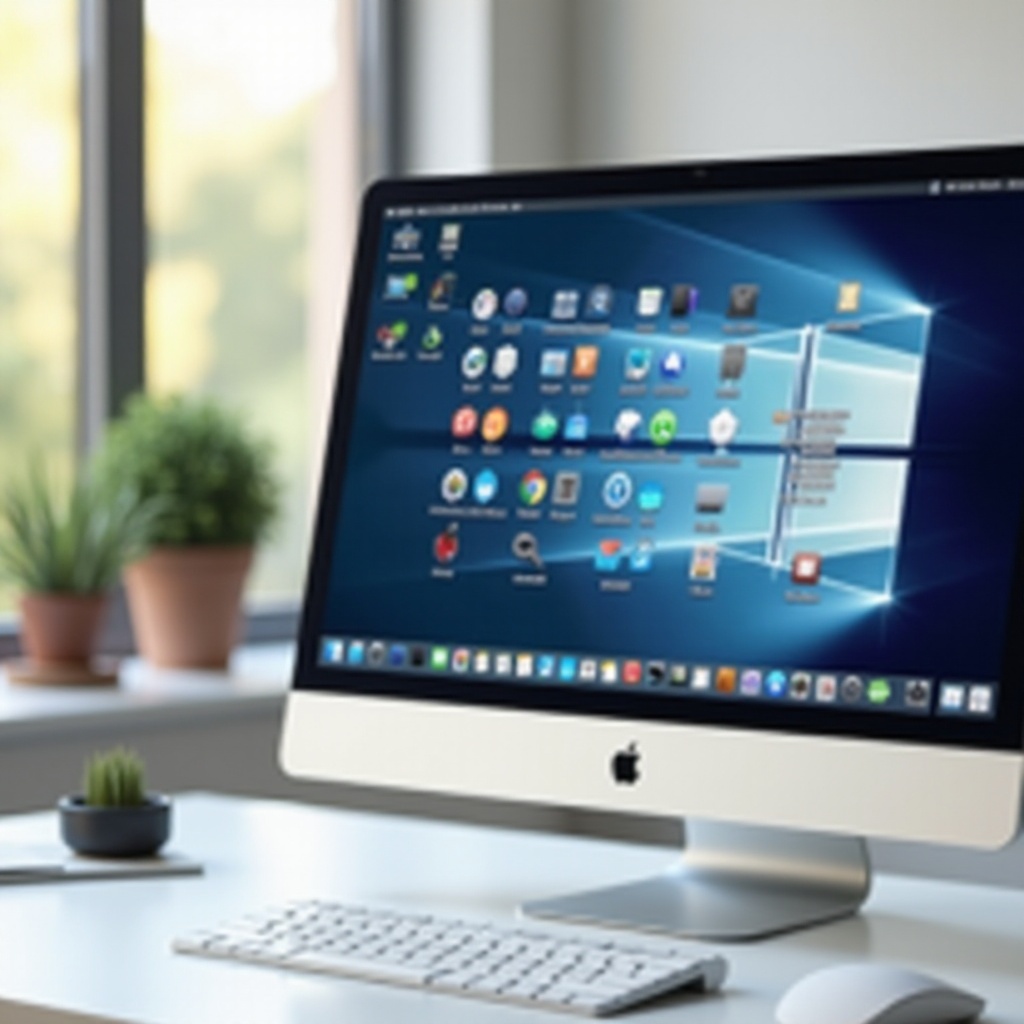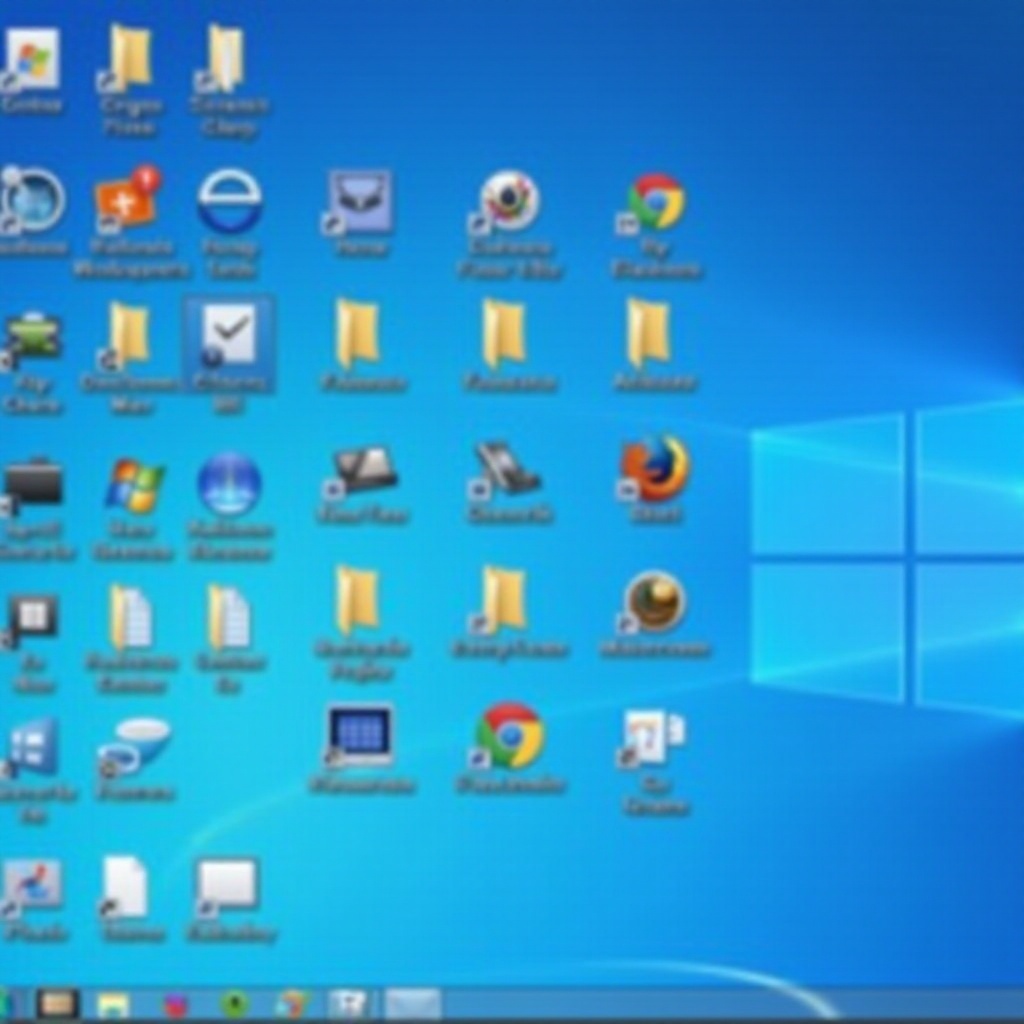Introduction
Are you frustrated with your disorganized desktop icons? Keeping your desktop tidy isn’t just about aesthetics. Efficiently arranged desktop icons can enhance productivity and ensure you can find what you need quickly. This guide will walk you through the process of restoring and managing your desktop icon arrangement using built-in features on Windows and macOS. We’ll also explore third-party tools that can simplify this chore and share tips for maintaining an organized desktop.

Understanding Desktop Icon Arrangement
Desktop icon arrangement involves the placement and organization of the various icons on your desktop screen. A well-organized desktop allows for quick access to frequently used programs, files, and shortcuts. Consistency in the placement of these icons can save time and reduce stress, particularly when dealing with numerous applications and documents.
In Windows and macOS, desktop icons can be arranged manually or automatically. Users can drag and drop icons to their preferred locations or let the system arrange them by name, size, type, or modification date. Both operating systems provide certain levels of customization to ensure your desktop satisfies your visual workspace needs.

Common Causes of Desktop Icon Disruption
Several factors can disrupt the careful arrangement of your desktop icons:
- Screen Resolution Changes: When you change your screen resolution, the icons may get scrambled as the system tries to adjust the display settings accordingly.
- Software Updates: Sometimes, operating system or software updates can reset your desktop layout to default settings.
- External Display Connections: Connecting or disconnecting external monitors or projectors can lead to icon disorganization due to differences in resolution and screen space.
- Accidental Drag and Drop: Without realizing it, you might drag and drop icons inadvertently, leading to disarray.
- System Crashes or Restarts: Unexpected system shutdowns or crashes can revert desktop arrangements to a previous state or scatter them randomly.
Understanding these common causes can help in preemptively taking steps to mitigate icon disruption, ensuring smoother restoration and management processes.
Restoring Desktop Icon Arrangement
Using Built-in Windows Features
Windows provides several built-in options to restore your desktop icon layout:
- Right-click on your desktop and go to ‘View.
- Select ‘Auto arrange icons’ to have Windows automatically arrange them.
- Alternatively, choose ‘Align icons to grid’ for a tidier look without auto-arranging.
To revert to a previous setup, follow these steps:
- Right-click on the desktop and hover over ‘Personalize.
- Select ‘Themes’ and click on ‘Desktop icon settings.
- Click ‘Restore Default’ to revert to Windows’ default icon setup.
Using Built-in macOS Features
macOS also offers convenient methods to restore desktop icon arrangements:
- Right-click on the desktop and select ‘Clean Up’ or ‘Clean Up By.
- Choose how you want to organize your icons (e.g., by name, kind, date modified).
To maintain a layout:
- Go to ‘Finder,’ then ‘View,’ and select ‘Show View Options.
- Set your preferred settings, and click ‘Use as Defaults’ to make it apply universally.
Utilizing these built-in features ensures a smooth process for restoring icon arrangements on both Windows and macOS platforms.
Tools and Software Solutions for Desktop Icon Management
DesktopOK Features and Setup
DesktopOK is a lightweight tool designed for managing desktop icon layouts:
- Features:
- Save and restore desktop icon positions for different screen resolutions.
- Automatically back up icon layouts.
- Customize icon arrangement and restoration schedules.
Setup:
- Download DesktopOK from the official site.
- Run the program, and click ‘Save’ to save your current icon layout.
- Use the ‘Restore’ button to revert to your saved layout when needed.
Fences Features and Setup
Fences, by Stardock, is another robust tool for organizing desktop icons:
- Features:
- Create shaded areas for icon grouping.
- Double-click to hide or reveal icons for a cleaner desktop.
- Snap icons within designated areas.
Setup:
- Download Fences from the Stardock website.
- Install and open the application.
- Create ‘fences’ by clicking and dragging on the desktop, then slot your icons into these areas for organized grouping.
Both tools provide additional functionality that can help maintain a neatly organized and easily navigable desktop environment.
Best Practices for Desktop Organization
Maintaining a Clutter-free Desktop
Keeping your desktop clutter-free involves regular maintenance and mindful organization:
- Remove unnecessary icons: Regularly delete shortcuts and files that are no longer in use.
- Use folders: Group similar items into folders like ‘Work,’ ‘Personal,’ or ‘Projects.
- Periodic cleaning: Dedicate a few minutes each week to reorganize or remove items.
Recommended Folder Structure
A clean desktop often relies on a well-structured folder system:
- Create main categories: Such as ‘Work,’ ‘Personal,’ ‘Projects,’ and ‘Archives.
- Subfolder organization: Inside ‘Work,’ have subfolders like ‘Current Projects,’ ‘References,’ and ‘Completed.
- Consistent naming: Use descriptive names for folders and files for easy identification.
Such organization ensures quick access to necessary files without cluttering your workspace.

Conclusion
Restoring and managing desktop icon arrangements is essential for maintaining a productive workspace. By leveraging built-in Windows and macOS features along with third-party tools like DesktopOK and Fences, you can keep your desktop clean and orderly. Follow the best practices outlined to ensure your desktop remains an efficient part of your digital environment.
Frequently Asked Questions
How do I automatically arrange desktop icons?
On Windows, right-click the desktop, go to ‘View,’ and enable ‘Auto arrange icons.’ On macOS, right-click the desktop, select ‘Sort By,’ and choose your preferred order.
Can I save and restore desktop icon positions in Windows?
Yes. Tools like DesktopOK can save and restore desktop icon positions, making it easy to revert to your preferred layout after any disruption.
Are there any tools to help manage desktop icons on macOS?
Yes. For macOS, while there are fewer dedicated tools, you can use built-in features and third-party apps like Clean My Mac to maintain desktop organization.
